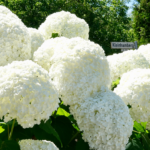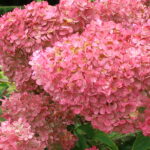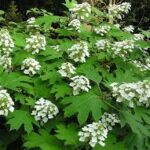 Hydrangeas are the rock stars of North Texas gardens, bringing lush blooms and vibrant color to yards in The Colony, Little Elm, Frisco, and beyond. At Fallas Landscape, we’ve helped countless clients maintain these showstoppers, and one of the most critical tasks for keeping hydrangeas healthy is proper trimming. With our unique North Texas climate—hot summers, mild winters, and the occasional surprise freeze—trimming hydrangeas requires a bit of know-how to ensure they thrive year after year. This guide breaks down why, when, and how to trim hydrangeas, with practical tips to keep your garden blooming beautifully.
Hydrangeas are the rock stars of North Texas gardens, bringing lush blooms and vibrant color to yards in The Colony, Little Elm, Frisco, and beyond. At Fallas Landscape, we’ve helped countless clients maintain these showstoppers, and one of the most critical tasks for keeping hydrangeas healthy is proper trimming. With our unique North Texas climate—hot summers, mild winters, and the occasional surprise freeze—trimming hydrangeas requires a bit of know-how to ensure they thrive year after year. This guide breaks down why, when, and how to trim hydrangeas, with practical tips to keep your garden blooming beautifully.
Understanding Hydrangeas
Hydrangeas are deciduous shrubs known for their large, colorful flower heads. In North Texas, popular varieties include:
- Bigleaf Hydrangeas (Hydrangea macrophylla): Think mophead or lacecap blooms; these flower on old wood (last year’s growth).
- Panicle Hydrangeas (Hydrangea paniculata): Cone-shaped blooms, flowering on new wood (this year’s growth).
- Smooth Hydrangeas (Hydrangea arborescens): Like ‘Annabelle,’ these also bloom on new wood.
- Oakleaf Hydrangeas (Hydrangea quercifolia): Native-adjacent with unique leaves, blooming on old wood.
 Knowing your hydrangea type is crucial because trimming practices differ based on whether they bloom on old or new wood.
Knowing your hydrangea type is crucial because trimming practices differ based on whether they bloom on old or new wood.
Why Trim Hydrangeas?
Trimming hydrangeas serves several purposes, especially in our region’s variable climate:
- Promotes Healthy Growth: Removing dead or weak stems encourages vigorous blooms.
- Prevents Disease: Clearing debris reduces fungal risks in our humid fall weather.
- Controls Size and Shape: Keeps hydrangeas from overtaking your garden space.
- Enhances Aesthetics: A tidy shrub looks great through winter and complements outdoor lighting features.
- Boosts Bloom Production: Proper cuts ensure maximum flowers for the next season.
When to Trim Hydrangeas
 Timing depends on your hydrangea’s bloom cycle and North Texas weather:
Timing depends on your hydrangea’s bloom cycle and North Texas weather:
- Bigleaf and Oakleaf Hydrangeas (Old Wood):
- Trim in late summer or early fall (August to early September) after blooms fade but before new buds set for next year.
- Avoid heavy fall pruning to preserve next season’s flowers.
- Panicle and Smooth Hydrangeas (New Wood):
- Trim in late fall to early spring (November to February) when plants are dormant.
- These are more forgiving, as they bloom on new growth.
- General Timing Tip: Watch for the first frost (mid-October to November in North Texas) as a cue for dormant-season trimming. Avoid pruning during active growth or right before a freeze to prevent stress.
How to Trim Hydrangeas
 Here’s a step-by-step guide for each hydrangea type:
Here’s a step-by-step guide for each hydrangea type:
- Bigleaf and Oakleaf Hydrangeas:
- Remove spent flower heads just above a healthy pair of buds.
- Cut out dead, damaged, or crossing branches to improve air circulation.
- Lightly shape the plant, removing no more than one-third of the growth.
- Avoid heavy pruning to protect next year’s blooms.
- Panicle and Smooth Hydrangeas:
- Cut back stems to 12-18 inches above the ground for a compact shape.
- Remove weak or dead wood to encourage strong new shoots.
- Thin crowded areas to promote airflow and reduce disease risk.
- General Techniques:
- Use sharp, clean bypass pruners or loppers for precise cuts.
- Sterilize tools with rubbing alcohol between cuts to prevent disease spread.
- Cut at a 45-degree angle just above a bud or node for healthy regrowth.
- Post-Trimming Care:
- Apply a 2-3 inch layer of organic mulch (e.g., pine bark or compost) around the base to insulate roots and retain moisture.
- Ensure proper irrigation, especially in our clay-heavy soils (Fallas is licensed under IRRIGATION NO 5950).
Tools for the Job
Keep your trimming efficient and plant-friendly with these tools:
- Bypass Pruners: For smaller stems and precise cuts.
- Loppers: For thicker branches on larger hydrangeas.
- Gardening Gloves: To protect against scratches or sap.
- Hedge Trimmer: For shaping large shrubs (use sparingly to avoid over-cutting).
- Sterilizing Solution: Rubbing alcohol or a bleach-water mix to clean tools.
Common Mistakes to Avoid
Steer clear of these pitfalls to keep your hydrangeas thriving:
- Pruning Old-Wood Hydrangeas in Fall: Heavy cuts on bigleaf or oakleaf types can eliminate next year’s blooms. Stick to light maintenance.
- Leaving Debris: Fallen leaves or cut stems can harbor pests or fungi—compost healthy material or bag diseased trimmings.
- Over-Pruning: Removing too much growth weakens plants and reduces vigor.
- Ignoring Variety: Always confirm whether your hydrangea blooms on old or new wood before trimming.
North Texas Considerations
Our region’s hot summers and clay soils make hydrangea care unique:
- Soil and Water: Hydrangeas love well-drained, moist soil. Use mulch and efficient irrigation to combat our heavy clay.
- Sun Exposure: Most hydrangeas prefer partial shade in North Texas to avoid summer scorch.
- Native Companions: Pair hydrangeas with drought-tolerant natives like salvia or coneflowers for low-maintenance beds.
- Garden Design: Group hydrangeas with similar pruning needs for easier care, and consider outdoor lighting to highlight their blooms.
Benefits of Proper Trimming
Investing time in trimming hydrangeas yields long-term rewards:
- Stronger, healthier plants with more abundant blooms.
- Reduced maintenance in spring due to proactive fall care.
- Enhanced winter garden appeal, perfect for holiday gatherings.
- Support for sustainable practices by minimizing chemical interventions.
For expert help, reach out to Fallas Landscape at 972.517.LAWN (5296) or info@fallaslandscape.com for a free estimate. We’re dedicated to creating stunning, sustainable outdoor spaces across North Texas. Let’s ensure your hydrangeas steal the show next season!

